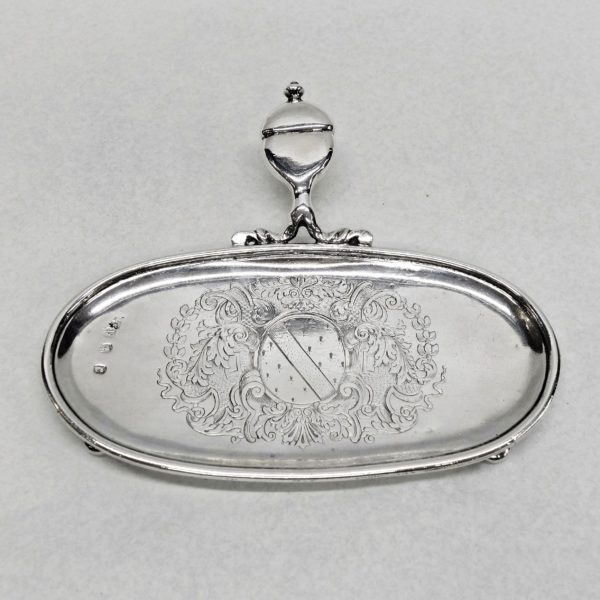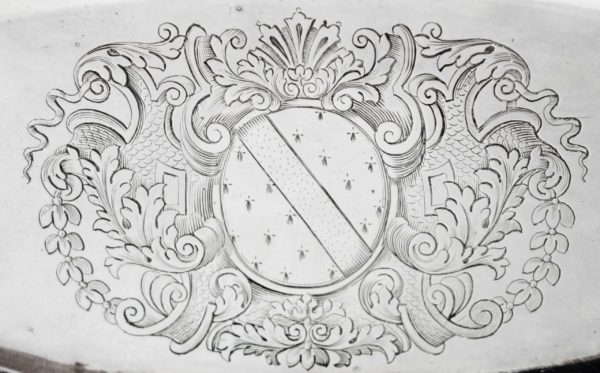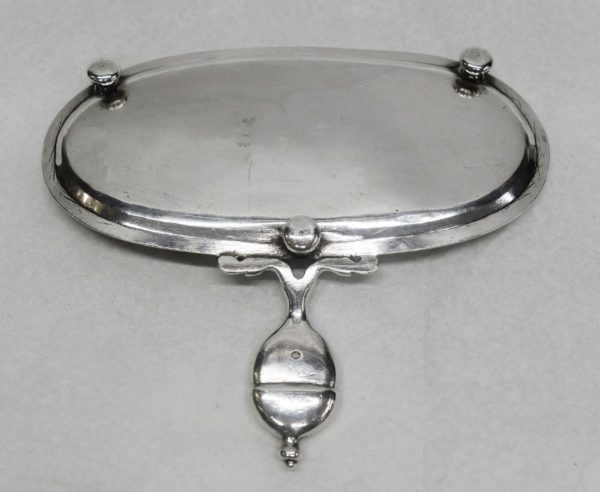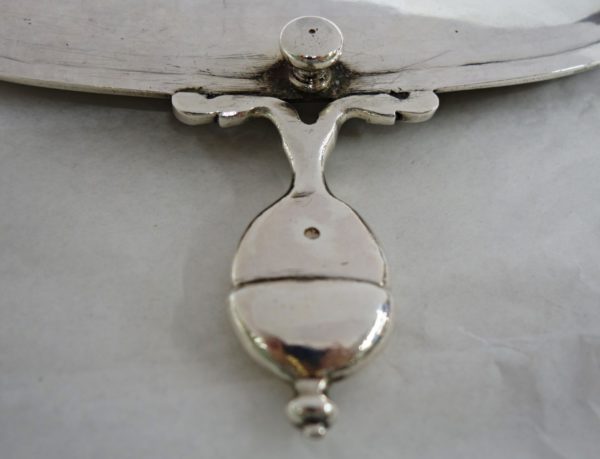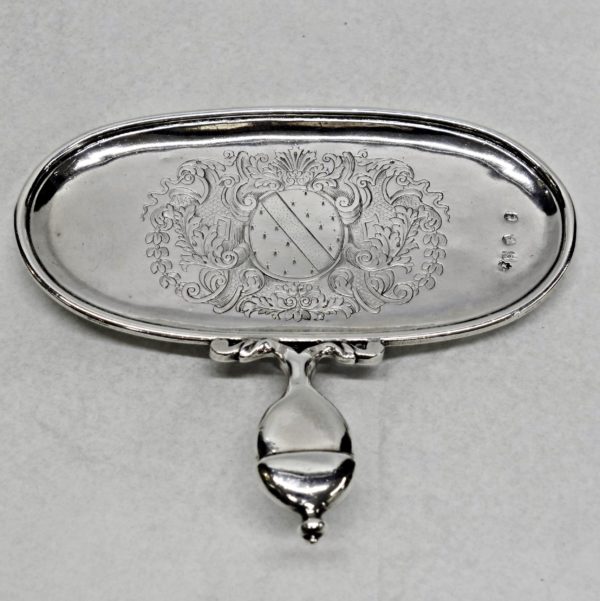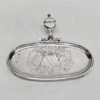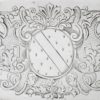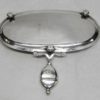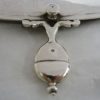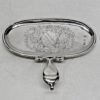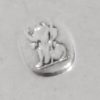Queen Anne Silver Snuffer Stand
SOLD
Stock: 9324
Date: 1710
Maker: Samuel Lea
Country: England
A rare early English silver snuffer tray of oval form with cast acorn handle and three ball feet, similar style...
Description
Description
A rare early English silver snuffer tray of oval form with cast acorn handle and three ball feet, similar style to the early chambersticks of a contemporary date. Britannia standard silver*. Hand engraved to the centre with a family armorial contained within a large scroll cartouche. Weight 250 grams, 8 troy ounces. Spread 15.8 cm. Pan 18.6 x 9.2 cm. London 1710. Maker probably Samuel Lea (Charles J Jackson’s “English Goldsmiths and Their Marks”).
Provenance: Collection of John N. Price Wood (1877-1962), born Wirksworth Hall, Derbyshire, and later at Henley Hall, Bitterley, Shropshire, who served in the 12th Lancers in the Boer War, and was the author of “Travel & Sport in Turkestan”, published in 1910.
Literature: Silver Candle Snuffers and Stands. Two different types of candle douters were used to extinguish the flame of a candle. The extinguisher which was a small cone on the end of a long handle and the snuffer which was a dual purpose scissor like tool which could extinguish the candle flame and also cut the wick of the candle for reuse. There were few snuffers made prior to 1700 and by the early nineteenth century more refined candles were introduced which no longer required the wick to be cut. Additional information available at http://www.oldandinteresting.com/tallow-candles-snuffers.aspx. Snuffer trays are usually rectangular or oval shaped and can sometimes be raised on feet or have a carrying handle. Some early stands, called standing snuffers, are shaped like a candlestick with a side carrying handle and a hole at the top where the point of the snuffer scissors is inserted – these were very quickly supeseded by the flat snuffer tray and scissors. It is rare now to find matching snuffers and base. Snuffers and trays were usually made by different specialists so even though the dates match, the makers will probably be different.
*Britannia Standard silver. In 1696, so extensive had become the melting and clipping of coinage that the silversmiths were forbidden to use the sterling standard for their wares, but had to use a new higher standard, 95.8 per cent pure. New hallmarks were ordered, “the figure of a woman commonly called Britannia” and the lion’s head erased (torn off at the neck) replacing the lion passant and the leopard’s head crowned. This continued until the old standard of 92.5 per cent was restored in 1720. Britannia standard silver still continues to be produced even today.
Condition
This unusual small tray is in very good condition with no damage. The engraving is still crisp. Stamped on top of the pan with a full set of English silver hallmarks.
Maker Information
Maker: Samuel Lea
Samuel Lea, London silversmith, apprenticed to John Diggle 1698. Turned over to Philip Rollod 1700. 1st mark as largeworker 1711. Second (sterling mark) 1721.
Our Guarantee
Customer satisfaction is our primary concern
All silverware on our website is checked thoroughly prior to offering it for sale and every product listing contains a condition report and details of the silver hallmarks.
All items offered on our website include:
- Free Shipping Worldwide
- Tracked and Insured
- 14 day no quibble money back guarantee
- We are accredited members of LAPADA and conform to their strict professional standards
- We dispatch 1-3 days after receiving cleared payments
More detailed information about deliveries, returns and how to pay is available in the Help section at the bottom of this page.
